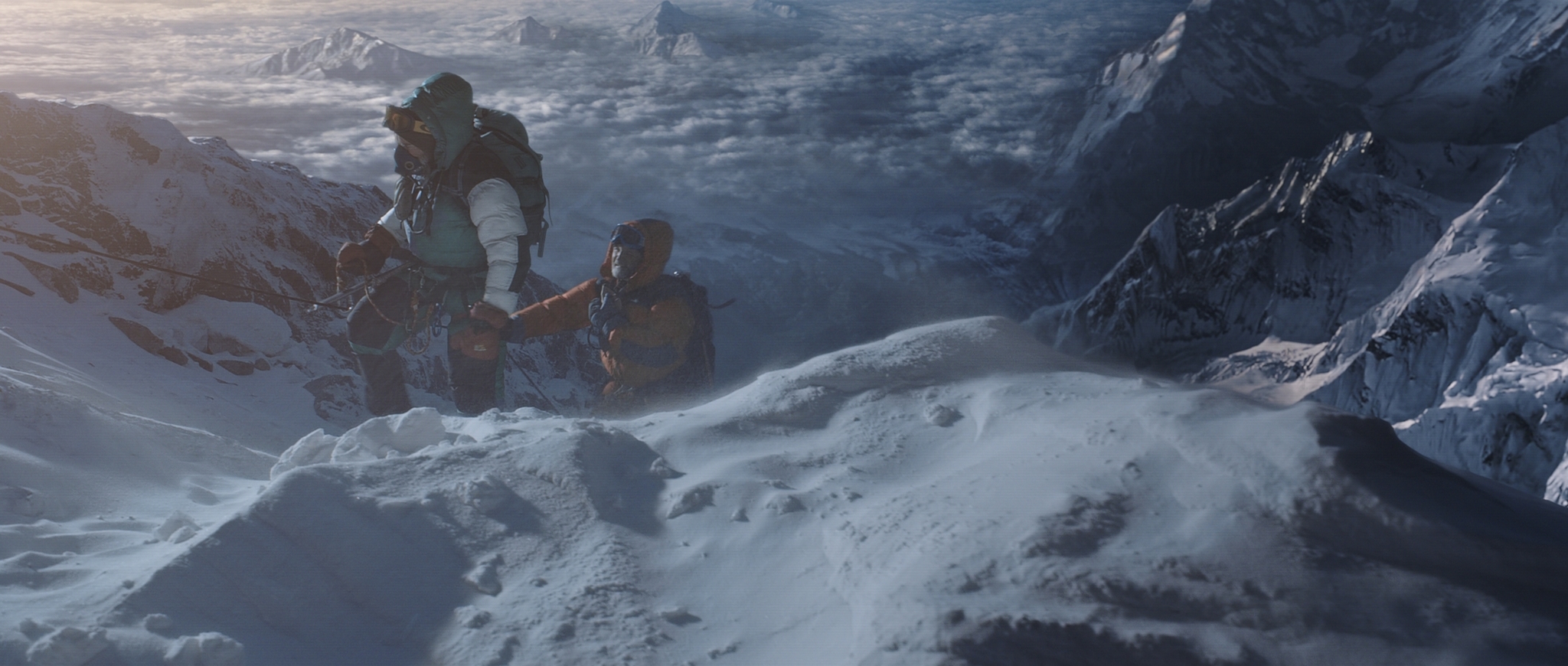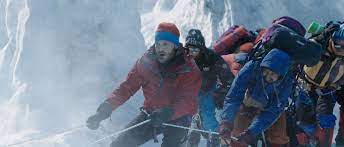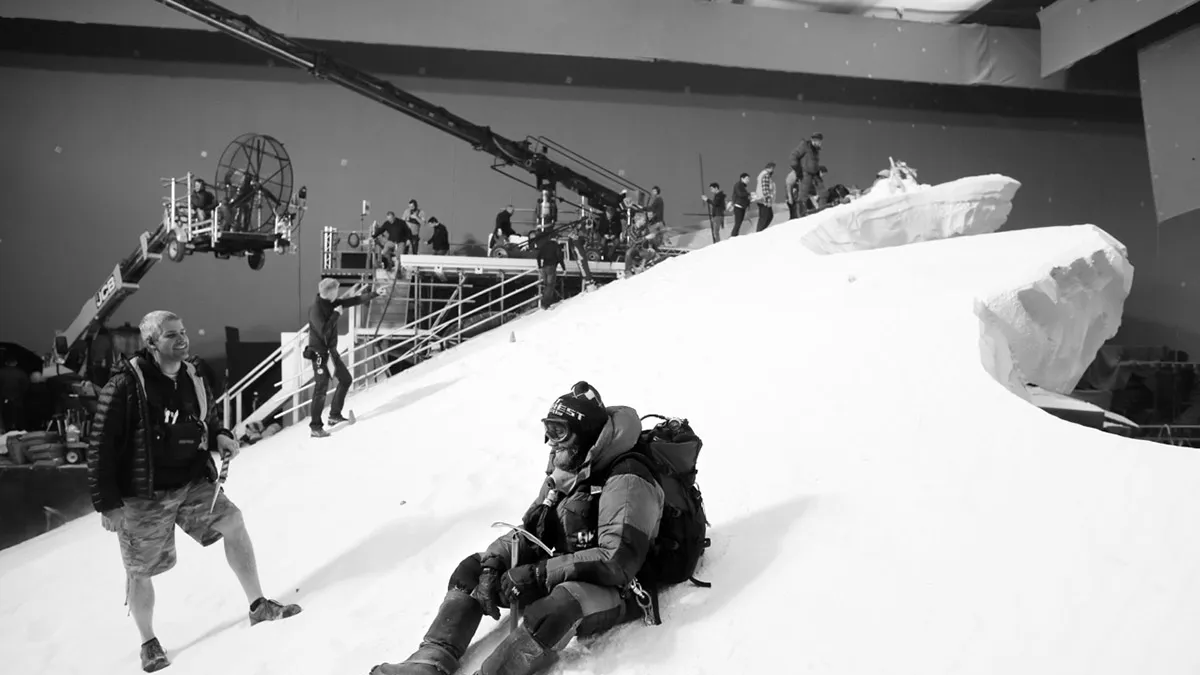🎬 Everest (2015)

Everest (2015) Review: A Harrowing and Visceral Tale of Survival and Ambition
Directed by Baltasar Kormákur, Everest (2015) is a gripping dramatization of the real-life 1996 Mount Everest disaster, where a deadly storm claimed the lives of several climbers. Featuring a stellar ensemble cast and breathtaking cinematography, the film delves into the human drive to conquer nature’s most formidable challenges while exploring the devastating consequences of ambition and hubris. With its intense storytelling and emotional depth, Everest offers a visceral and sobering depiction of survival on the world’s highest peak.
Plot Overview: Conquering the World’s Highest Mountain
The story follows two commercial expeditions—Adventure Consultants, led by Rob Hall (Jason Clarke), and Mountain Madness, led by Scott Fischer (Jake Gyllenhaal)—as they guide climbers to the summit of Mount Everest. Among their clients are Beck Weathers (Josh Brolin), a Texas doctor with a passion for adventure; Doug Hansen (John Hawkes), a mailman determined to prove himself; and Yasuko Namba (Naoko Mori), a Japanese woman seeking to complete her Seven Summits challenge.
What begins as a carefully planned expedition quickly unravels as a severe storm traps climbers in the death zone, turning their quest for glory into a desperate fight for survival. The film chronicles the bravery, determination, and tragic losses experienced by climbers and guides as they face the mountain’s unforgiving conditions.
Jason Clarke as Rob Hall: A Quietly Heroic Performance
Jason Clarke delivers a heartfelt and grounded performance as Rob Hall, capturing the seasoned guide’s professionalism, compassion, and sense of responsibility toward his clients. Clarke brings emotional depth to Hall’s character, particularly in his poignant final moments, which highlight the devastating human cost of pursuing such extreme challenges.
Jake Gyllenhaal as Scott Fischer: A Charismatic Counterpart
Jake Gyllenhaal portrays Scott Fischer with a laid-back charm that contrasts with Hall’s methodical approach. Fischer’s easygoing demeanor belies his deep respect for the mountain and his clients. Gyllenhaal’s performance adds nuance to the film, illustrating the camaraderie and differing philosophies between the two expedition leaders.
Supporting Cast: A Stellar Ensemble
- Josh Brolin as Beck Weathers: Brolin brings intensity and vulnerability to his role as the brash Texan who undergoes a remarkable journey of survival against the odds.
- John Hawkes as Doug Hansen: Hawkes gives a deeply empathetic performance as a climber driven by personal stakes, making his arc one of the film’s most tragic.
- Emily Watson as Helen Wilton: Watson shines as the Adventure Consultants base camp manager, whose emotional turmoil anchors the film’s narrative.
- Keira Knightley as Jan Arnold: Knightley’s brief but impactful role as Hall’s pregnant wife adds emotional resonance, particularly during the film’s heart-wrenching climax.
Themes: Ambition, Survival, and Human Connection
- The Cost of Ambition: The film explores the risks climbers take in their pursuit of the summit, emphasizing the thin line between achievement and tragedy.
- Nature’s Indifference: The story underscores the mountain’s immense power and the fragility of human life in the face of its unforgiving elements.
- Human Connection: Moments of sacrifice, camaraderie, and resilience illustrate the importance of human bonds in the face of unimaginable adversity.
Direction and Cinematography: A Visual and Emotional Triumph
Baltasar Kormákur’s direction immerses viewers in the grandeur and danger of Mount Everest, capturing the scale and peril of the mountain with visceral intensity. The cinematography by Salvatore Totino is breathtaking, combining aerial shots of the Himalayan peaks with claustrophobic close-ups that convey the climbers’ physical and psychological struggles. The film’s visual realism is complemented by its meticulous attention to detail, from the brutal winds to the frosty breath of climbers in thin air.
Action and Pacing: Tense and Relentless
The film’s pacing mirrors the progression of a real-life climb—methodical in its buildup and relentlessly intense during its climactic storm sequences. The tension is palpable as the climbers face dwindling oxygen supplies, subzero temperatures, and the encroaching storm. The realism of the action sequences heightens the emotional stakes, making the characters’ struggles feel immediate and harrowing.
Historical Accuracy: Balancing Fact and Drama
Everest remains largely faithful to the real events of the 1996 disaster, drawing from survivor accounts and Jon Krakauer’s book Into Thin Air. While some characters and details are condensed for dramatic purposes, the film captures the essence of the tragedy and the challenges of commercial mountaineering.
Key Moments That Define Everest
- The Summit Push: The climbers’ ascent to the summit is visually stunning yet ominous, foreshadowing the dangers that lie ahead.
- The Storm’s Arrival: The onset of the storm is a turning point, plunging the climbers into chaos and desperation.
- Rob Hall’s Final Call: Hall’s emotional phone call to his wife is one of the film’s most heartbreaking moments, underscoring the personal cost of adventure.
- Beck Weathers’ Survival: Weathers’ incredible will to survive provides a glimmer of hope amid the tragedy.
Strengths of Everest
- Stunning Visuals: The cinematography captures the majesty and peril of Mount Everest, immersing viewers in the climbers’ experience.
- Emotional Depth: The film balances thrilling action with poignant character moments, making the tragedy deeply impactful.
- Strong Ensemble Cast: Each actor delivers a memorable performance, adding authenticity and emotional weight to the story.
- Tense Storytelling: The film’s pacing and direction build tension effectively, keeping viewers engaged throughout.
Weaknesses of Everest
- Character Development: With a large ensemble cast, some characters receive less depth, making it harder to connect with every individual’s story.
- Predictable Outcomes: As a dramatization of a well-documented event, the film’s conclusion may lack suspense for those familiar with the story.
- Crowded Narrative: The multiple storylines sometimes compete for attention, diluting the focus on individual arcs.

Legacy and Reception
Everest received praise for its stunning visuals, intense storytelling, and performances, particularly from Jason Clarke and Josh Brolin. While some critics noted its lack of deeper character development, the film was lauded for its respectful treatment of the 1996 tragedy and its immersive depiction of the perils of mountaineering. It has since been recognized as a powerful survival drama and a sobering cautionary tale about the dangers of pushing human limits.
Fun Facts About Everest
- Filming Locations: The film was shot on location in Nepal, the Italian Alps, and Pinewood Studios, blending real and recreated environments for authenticity.
- Survivor Involvement: The filmmakers worked closely with survivors and consultants to ensure the accuracy of key events and details.
- Training the Cast: The actors underwent rigorous training to convincingly portray climbers, including high-altitude acclimatization and technical climbing skills.
Conclusion: A Visceral and Emotional Experience
Everest (2015) is a visually stunning and emotionally resonant film that captures the majesty and danger of the world’s highest mountain. With its strong performances, gripping storytelling, and thought-provoking themes, it serves as both an exhilarating adventure and a poignant tribute to those who risk everything in the pursuit of greatness. For fans of survival dramas and true stories, Everest is a must-watch.